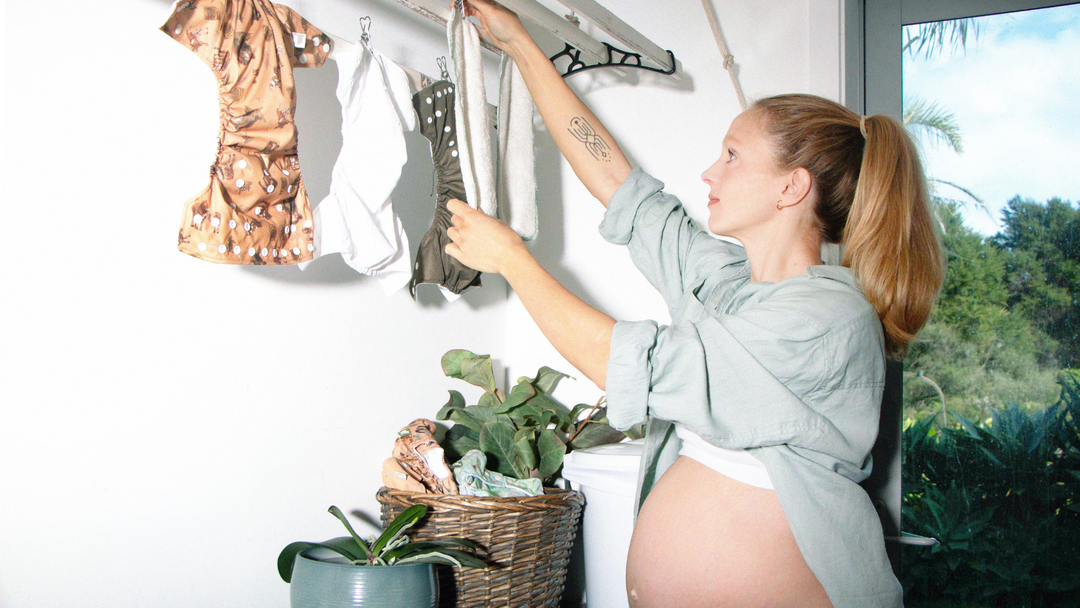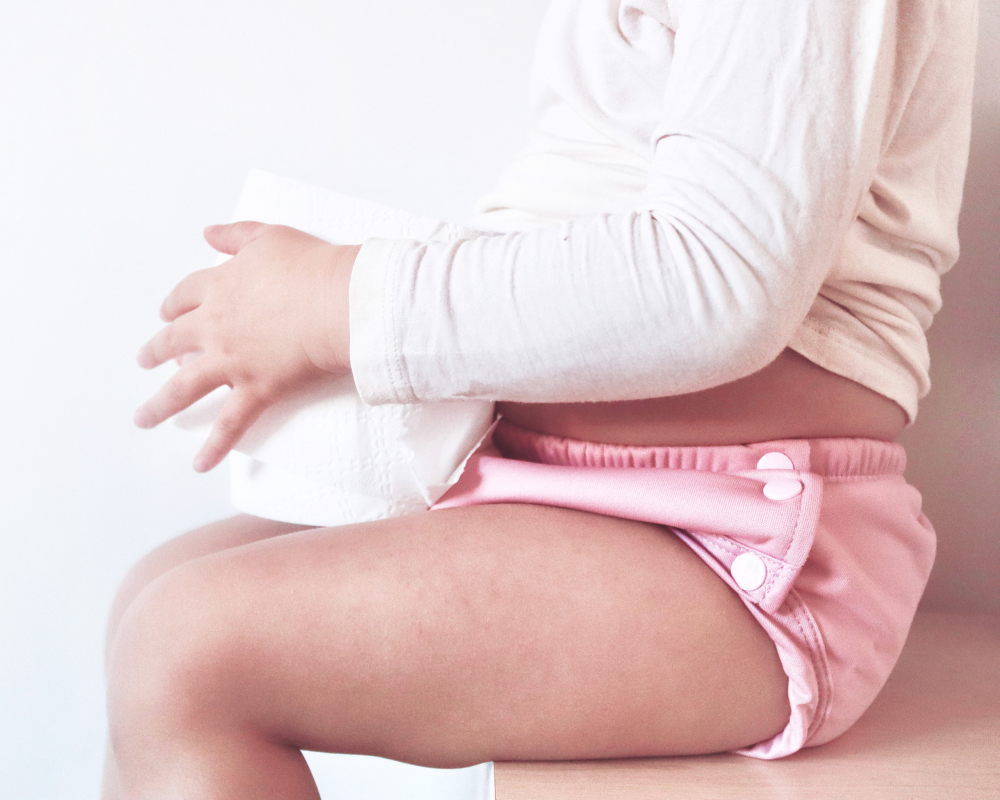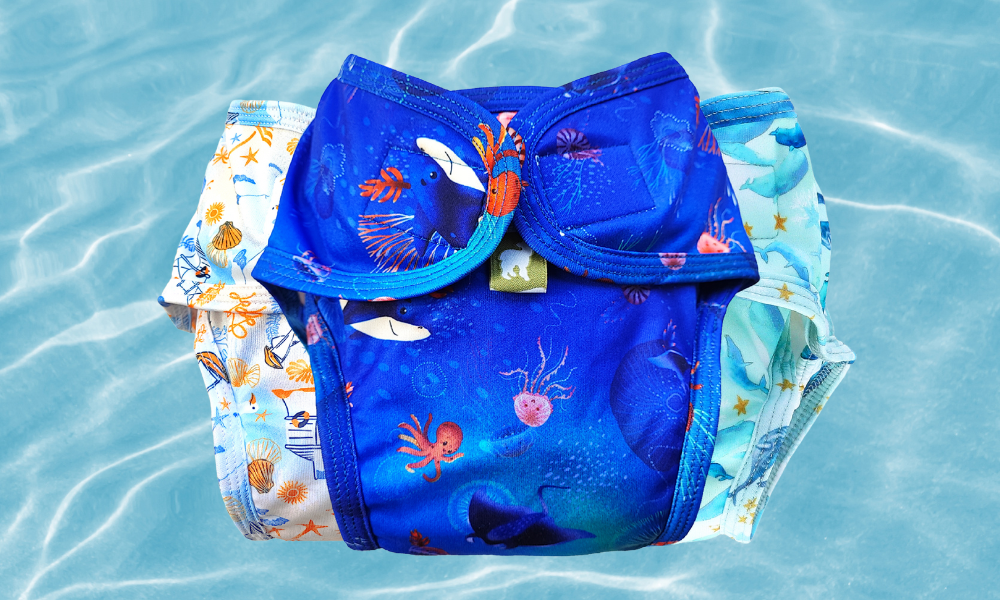When switching to reusable nappies, the first thing you have to decide is how many nappies will be enough.
While I wish we had a universally correct number, no one will be able to tell you exactly how many reusable nappies you will need as every family and every baby is different. However, with our experience 25 years of experience, we’ve got a fair idea!
We believe that having 2-3 days' worth of cloth nappies is sufficient. This number is equal to:
36 cloth nappies for newborns
24 cloth nappies for infants
20 cloth nappies for toddlers
Can I do reusable nappies part-time?
A lot of people choose to use cloth nappies part-time, and this is actually a great way to see if you like them!
Part-timers can truly just start with just one nappy. One nappy a day will still be saving 365 disposable nappies from landfills. This might not seem like much but when 1 disposable nappy is the equivalent of 7 plastic bags, could be saving 2,500 plastic bags from landfills! I think that’s an incredible achievement in itself!
Some people choose to use cloth nappies for daytime only. If you are using cloth nappies just for the day, you’ll need 15-20 nappies.
On the other hand, some people prefer to use cloth nappies for only nighttime (hello great containment and an undisturbed night's sleep). If you are using cloth nappies for nighttime, you’ll leave the nappy on for much longer so this means you’ll only need around 6 reusable nappies.
If you decide to use cloth nappies part-time, you will probably start to wonder if you can wash cloth nappies with other items of clothes.
So, can cloth nappies be washed with other clothes? Yes, you can wash cloth nappies with your regular laundry. However, cloth nappies are different from other types of laundry in some important ways and so you may want to carefully consider what laundry you wash them with, and when you will add them.
Firstly, dirty nappies are a different level of dirty than regular dirty clothes. Dirty clothes are usually just dirty on the outside; they have food or dirt on the surface only. Occasionally clothing has sweat penetrating inner layers, but clothes are often thin, single-layer pieces of material, and the sweat isn’t in great quantities. Cloth nappies on the other hand are thick, multi-layered products and the dirt (we’re talking about poos and wees remember) is sucked deep into them by design. This is why cloth nappies need a long wash as they need to be cleaned inside and out.
Second, dirty nappies can’t be stored for as long. Dirty clothes can be stored in open laundry hampers, and because they are thin and lightly soiled, they dry out and can then sit waiting to be washed for days or even weeks at a time (we’ve all been there!).
Cloth nappies on the other hand are often soaking wet when put aside until laundry day. Because urine does naturally have a smell, many parents opt to store them in a zipped wet bag or lidded nappy bucket where airflow is minimal.
Depending on what storage method you choose, cloth nappies should be washed either every 2 to 3 days to keep bacteria and mildew/mould from growing. If nappies are left for longer than this, we recommend putting them through an extra 60-degree wash to ensure no nasties have built up!
We suggest adding cloth nappies to your towel wash - the cotton cycle on your machine is usually perfect for washing dirty nappies and towels!
Are cloth nappies easy to use?
I know I will sound biased, but honestly yes cloth nappies are easy to use. Once you get into the swing of things, it is as easy as use, wash and reuse - just like a baby’s regular clothes! Just like anything, you just to have dive right in, and if you need help, we are here to support and guide you! Why not order a trial kit and see how you go.
And, even if cloth nappies add extra washing, the environmental and cost savings are, in our opinion, worth every second!
Studies have shown that a baby will go through 5000-7000 nappies from birth to being fully potty trained.
Statistics show that own-brand disposable nappies can cost a family with one child over £1875 in 2.5 years. The cost is much higher if you prefer branded nappies!
Recent statistics show that over 90% of UK babies under two use disposable nappies. This means three billion nappies are thrown away every year by UK families, accounting for up to 3% of the total household waste.
Each disposable-nappy wearing child is responsible for over a tonne of plastic waste that ends up in landfills.
Cloth vs disposable nappies and diapers

How many inserts/boosters do I need?
Inserts, or boosters as we also call them, are absorbent pieces of material which are added to the nappy to make it more absorbent.
The main difference between disposable nappies and cloth nappies is disposable nappies are based on chemistry (the polymers activate when liquid touches them) whereas cloth nappies are physics-based; the more absorbent the materials, the more liquid the nappy will contain!
Most nappies will come with enough boosters, but most people need to add more as the child grows. So, we recommend you have 10 boosters or inserts extra so you can layer and customise the nappy based on the baby’s needs. You’ll notice when a baby is first born they are constantly needing to be changed; this is because they have no control over their bladder and are on a 100% liquid diet. As the baby grows, moves to solid foods and slowly starts to learn bladder control, they will create fewer liquids and need to be changed less frequently. Finally, when a toddler is on the brink of potty training, they have learnt how to control their bladder and will start to release all at once which can cause the nappies to ‘flood’ - see how to use cloth nappies for toddlers here.
So, you’ve read this far, congratulations. I guess now you’ll want to know how to start using cloth nappies!?
We've written a guide for anyone new to cloth nappies. You can download a free copy here.
In a simple breakdown, this is what you’ll need to start using cloth nappies;
- Reusable Nappies
- Storage for reusable nappies (wet bags for out and about and a nappy bucket/hanging nappy pail for home)
- Boosters/inserts (these add the absorbency)
- Liners (these make nappy changes easier)
All this and more are explained in our Cloth nappy guide! Download now!
Looking to start using cloth nappies fast? Buy one of our Complete Nappy Kits and get started straight away!
Questions? Email us! We’ve helped hundreds of thousands of families switch to cloth nappies so we can definitely help you!
care@littlelamb.com







